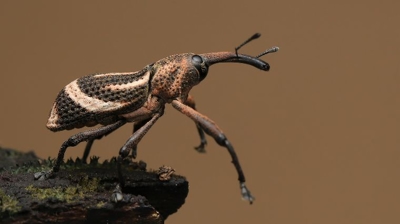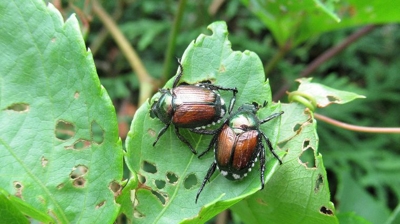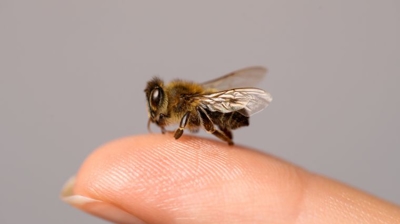
Great Black Wasps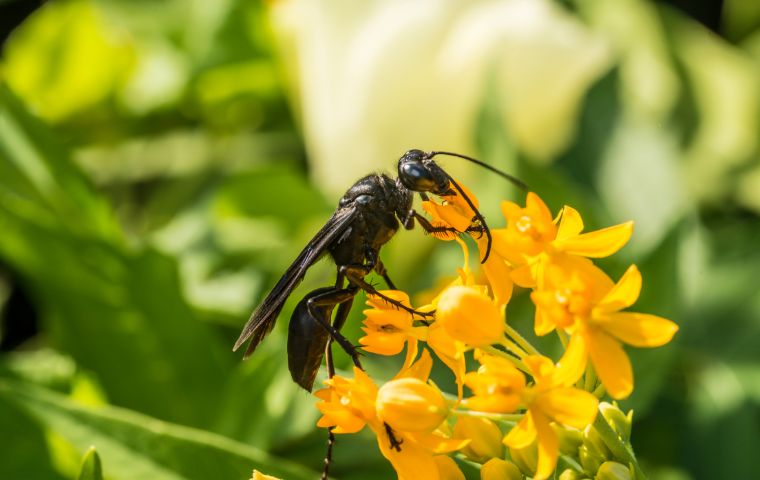
What Are Great Black Wasps?
Great black wasps, scientifically known as Sphex pensylvanicus, are fascinating and impressive wasps found in North America. Here's an overview of these remarkable creatures:
Are Great Black Wasps Dangerous?
Great black wasps (Sphex pensylvanicus) are generally not considered dangerous to humans, but they can sting if they feel threatened or provoked. Here are some of the potential risks associated with these wasps:
- Aggressiveness: Great black wasps are solitary insects, and unlike social wasps such as yellowjackets and hornets, they do not defend a colony. This makes them less territorial and less likely to sting in defense of a nest. These wasps are typically docile and will often go about their foraging and nesting activities without bothering humans.
- Stinging Behavior: While great black wasps are not naturally aggressive toward humans, they can sting if they perceive a direct threat or are mishandled. Their primary instinct is to use their stinger for prey capture and defense. It's important to approach these wasps with caution and avoid disturbing their nests or handling them. If left undisturbed, they are unlikely to sting.
- Sting Characteristics: Great black wasp stings can be painful, but the venom is not considered highly potent, and their stings are not typically dangerous to individuals who are not allergic to wasp venom. Like many stinging insects, reactions to stings vary from person to person. Some people may experience localized pain, redness, and swelling at the sting site, while others may have more severe reactions.
While great black wasps can sting if provoked or handled, they are generally not considered dangerous unless you are allergic to their venom. Their natural behavior is focused on hunting for prey and foraging for nectar. If you encounter them, it's best to observe them from a respectful distance and avoid interfering with their activities to minimize the risk of being stung.
Great Black Wasp Appearance
Great black wasps, scientifically known as Sphex pensylvanicus, have a distinctive and easily recognizable appearance. Here's what they look like:
- Size: Great black wasps are relatively large insects. They typically measure between 0.7 to 1.5 inches (1.8 to 3.8 cm) in length, with females being slightly larger than males.
- Color: As their name suggests, these wasps are primarily black. They have a shiny, jet-black exoskeleton, which gives them a sleek and robust appearance.
- Body Structure: Their bodies are elongated and slender. Great black wasps have a distinct waist, known as a petiole, which separates the thorax (the middle segment of the body) from the abdomen (the rear segment). This feature gives them an hourglass-like silhouette.
- Wings: Their wings are transparent and smoky in color, with a network of veins that are visible. When at rest, their wings are typically folded flat over their abdomen.
- Eyes: They have large, prominent compound eyes, which provide them with excellent visual capabilities for hunting and navigating their surroundings.
- Antennae: Great black wasps have long and slender antennae that extend from their head. These antennae are used for sensory perception and communication.
- Mandibles: Their mandibles (mouthparts) are adapted for capturing and paralyzing prey, such as grasshoppers and katydids.
- Legs: Their legs are long and sturdy, ideal for digging burrows and capturing prey. The hind legs are adapted for digging while the front and middle legs are used for capturing and holding prey.
The male and female great black wasps look quite similar in terms of coloration and overall body structure. However, as mentioned earlier, females are slightly larger than males.
Great black wasps are characterized by their impressive size, glossy black color, slender body with a distinct waist, and smoky wings. Their appearance is well-suited to their solitary hunting and nesting behavior in open fields and gardens.
Great Black Wasp Habitat
Great black wasps (Sphex pensylvanicus) are commonly found in various regions of North America. To locate these impressive insects, you can look in specific types of habitats and environments where they tend to thrive. Here's where you might find great black wasps:
- Open Fields: Great black wasps are often observed in open grassy fields, meadows, and prairies. These areas provide the space and vegetation where they can forage for nectar and hunt for prey.
- Gardens: These wasps can frequently be found in gardens, especially those with a variety of flowering plants. They are attracted to the nectar produced by flowers and play a valuable role in pollination.
- Woodland Edges: While they prefer open spaces, great black wasps can also be encountered near the edges of wooded areas where there is a mix of vegetation and open ground.
- Sand Dunes: In some coastal regions, you may find great black wasps in sandy habitats, such as sand dunes. These areas can offer suitable soil for their nesting burrows.
- Dry, Well-Drained Soil: Female great black wasps are known for digging burrows to create their nests. They prefer soil that is dry and well-drained. Sandy or loamy soil types are often chosen for their nesting sites.
- Urban and Suburban Areas: These wasps are adaptable and can be found in urban and suburban environments, provided there are suitable foraging opportunities and nesting sites.
- Late Spring to Early Autumn: Great black wasps are generally active from late spring to early autumn, so this is the best time to look for them. During this period, they are busy hunting for prey, building nests, and foraging for nectar.
- North American Range: Great black wasps are widespread in North America, and their range includes many U.S. states and parts of Canada. While their distribution can vary, you can find them in a range of geographic locations within their habitat range.
When searching for great black wasps, it's essential to approach them with caution and observe them from a respectful distance. While they are not particularly aggressive towards humans, they may sting if they feel threatened or cornered. Keep in mind that these wasps are beneficial for the environment, as they help control pest populations by preying on insects like grasshoppers and katydids.
Great Black Wasp Diet
Great black wasps (Sphex pensylvanicus) have a varied diet that changes as they go through different life stages. Their dietary preferences reflect their roles as both nectar-feeding pollinators and predatory insects. Here is what great black wasps eat at various stages of their life:
Great Black Wasp Adults:
- Nectar: Adult great black wasps are pollinators and feed on nectar from a variety of flowering plants. They play a vital role in the pollination of these plants. Their feeding on nectar helps transfer pollen from one flower to another, aiding in the reproduction of plants.
- Sugary Substances: In addition to nectar, they may occasionally feed on other sugary substances such as honeydew, which is produced by aphids and scale insects.
Great Black Wasp Larvae:
- Prey: The larvae of great black wasps have a carnivorous diet. The female adult wasp captures grasshoppers, katydids, and similar insects. These prey items are paralyzed but kept alive within the nest. The female then lays her eggs on top of the paralyzed prey. The paralyzed insects serve as a source of fresh food for the developing wasp larvae. The larvae feed on the paralyzed prey, gradually consuming them as they grow.
The diet of great black wasps varies based on their life stage. Adult wasps feed on nectar to sustain themselves and facilitate pollination, while the larvae depend on paralyzed insects for their nourishment. This unique combination of nectar-feeding and predatory behavior makes great black wasps valuable contributors to ecosystem health by helping control insect populations and aiding in the pollination of plants.
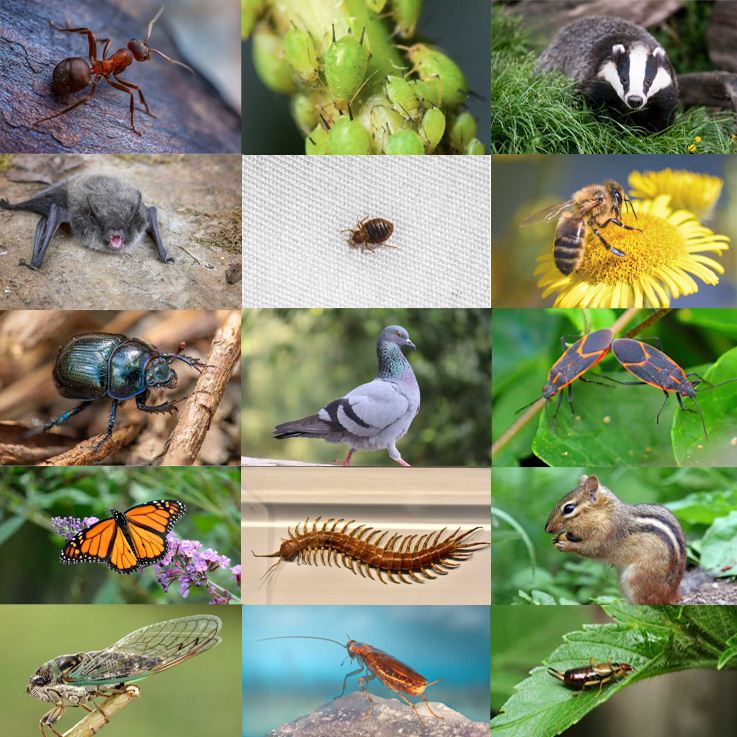
Great Black Wasp Life Cycle
The life cycle of great black wasps (Sphex pensylvanicus) is a fascinating process that includes several distinct stages, from egg to adult. Here is their life cycle:
- Egg Stage: The life cycle begins when a female great black wasp seeks out a suitable nesting site. Typically, she excavates a burrow in well-drained soil, creating a tunnel that leads to a series of small cells. In each cell, the female places a single egg. Before laying the egg, she captures and paralyzes a prey item, often a grasshopper or katydid. The paralyzed prey serves as a fresh food source for the developing larva.
- Larval Stage: The hatched larva of the great black wasp feeds on the paralyzed prey left by its mother. The larva consumes the prey as it grows, benefiting from the nutrients stored within the paralyzed insect. The larval stage can last for several days to a few weeks, depending on environmental conditions and the availability of prey.
- Pupal Stage: After the larval stage, the great black wasp larva pupates. During this stage, the larva forms a protective cocoon around itself. It undergoes metamorphosis, transforming into an adult wasp. The pupal stage can vary in duration but typically lasts for a few weeks.
- Adult Stage: Once the metamorphosis is complete, the adult great black wasp emerges from the cocoon. Adult great black wasps are solitary insects, which means they do not live in colonies. They are solitary in nature and do not engage in social behaviors as some other wasp species do. The adult wasps are primarily active during the daytime. They engage in activities such as foraging for nectar from flowers to sustain themselves and hunting for prey to provision their nests. Mating occurs during this stage, and females begin the process of seeking suitable nesting sites to lay their eggs, repeating the life cycle.
The life cycle of great black wasps is a prime example of solitary wasp behavior, where each female is responsible for provisioning and tending to her own offspring. This cycle is important for controlling insect populations, as these wasps prey on insects like grasshoppers and katydids, contributing to the natural balance in their ecosystem.

Hear From Our Happy Customers
-
"Exceeds Expectations"
I can’t say enough positive things about this company... The tech that came out, Jarvis went above and beyond my expectations. Thank you guys, I will continue using your services.
- Jake M. -
"Very Knowledgeable"
The tech that arrived was courteous, professional, and very knowledgeable. He was Great.
- Uerial I. -
"Fantastic & Patient"
Jarvis was fantastic and patient. He answered my questions with an in-depth explanation and addressed all of my areas of concern. Would love for him to be my assigned tech going forward. Well done!
- Yonnette M. -
"Great Communication"
Tech was on time, communication was great, and he accommodated my needs.
- Alonzo W. -
"Professional & Considerate"
I’m pleased with Miche services. Jarvis came today. Professional and considerate. Thank you!
- Judy B. -
"Wonderful Service"
Wonderful service. Jarvis is great. Took care of everything I needed. Thank you!
- Henry P.

